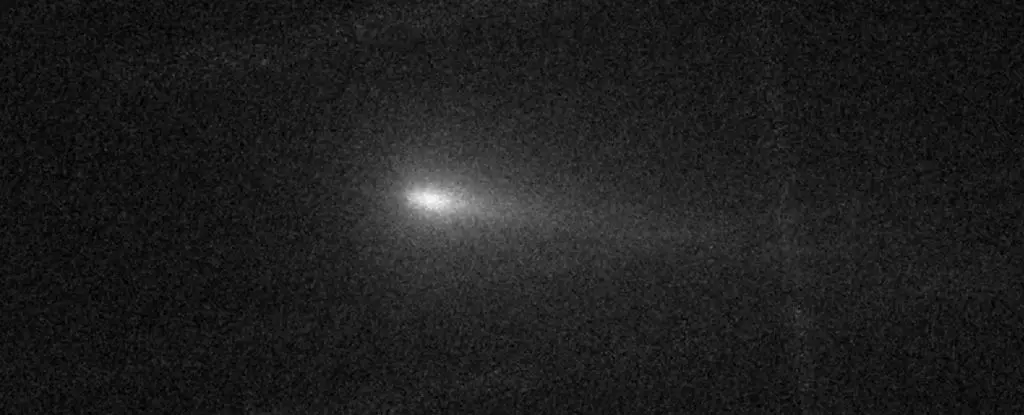In the realm of astronomical exploration, comets are some of the most captivating objects to observe. They offer a rare glimpse into the early solar system’s materials and behaviors. The recent excitement surrounding Comet C/2024 S1, a Kreutz sungrazer, has turned into a somber but fascinating narrative of potential disintegration as it approaches the Sun. Discovered on September 27, 2024, this comet was expected to become a spectacular sight by Halloween, with predictions categorizing it as bright enough to be seen with the naked eye. Unfortunately, it appears that C/2024 S1 is on a path toward disintegration, an occurrence that, while disappointing, is not particularly surprising given the nature of such celestial bodies.
The Life Cycle of Comets
Comets, often described as “dirty snowballs” composed of ice, dust, and rocky material, usually originate from the cold regions of the solar system. Their journey often brings them close to the Sun, where the heat causes the ice to sublimate into gas and dust, creating a bright coma and tail. For C/2024 S1, its trajectory brings it perilously close to the Sun—approximately 1.2 million kilometers (750,000 miles)—on October 28, 2024. As it approaches this critical point, the stresses from solar radiation and gravitational forces can trigger various physical processes that can lead to disintegration.
Early observations in October indicated that the comet was exhibiting outburst activity—sudden releases of gas and particles, causing it to brighten temporarily. This phenomenon can signal internal instability within the comet, including the potential fragmentation of its nucleus. Observations from amateur astronomers have recently pointed to a concerning trend: the comet appears to be growing dimmer and losing visibility, hinting at the possibility of its nucleus breaking apart.
The underlying reasons for the disintegration of comets are a subject of intense study and intrigue. As comets approach the Sun, the sublimation of gases from their icy core can increase rotational speed due to the uneven release of material. This accelerated spin can exert centrifugal forces that may lead to the nucleus fragmenting. For C/2024 S1, signs of instability through outbursts could be the clearest indication that it is on the brink of fragmentation.
Historical comparisons shed light on this phenomenon; in 2020, Comet C/2019 Y4 completely shattered as it neared the Sun, providing a unique observational case for scientists. Current insights from C/2024 S1 have ignited similar conversations within the astronomical community, specifically regarding its potential breakup and what remnants might remain to be observed.
The Cosmic History of Kreutz Sungrazers
C/2024 S1 is not just any comet; it is a member of the Kreutz family of sungrazers, which are believed to be remnants of a much larger comet that disintegrated around the year 1106 CE. Over the centuries, this original giant comet fragmented into numerous smaller bodies, among which C/2024 S1 has emerged. The Kreutz sungrazers have been known to produce dazzling displays, as seen with Comet Ikeya-Seki in 1965, which could be seen lighting up the sky with tremendous brightness.
As we monitor C/2024 S1 during its critical perihelion, astronomers have poured over images and observations to assess the comet’s condition. Will it survive its close encounter with the Sun? If it does, observers may be treated to a magnificent sight—a long, trailing tail of gas and dust devoid of a bright nucleus. However, if fragmentation occurs, the remnants could dissipate, leaving only the memory of its brilliance.
Currently, C/2024 S1 is best observed from the Southern Hemisphere, particularly with the aid of binoculars or small telescopes. Predictions had initially suggested it might even rival Venus in brightness, a thrilling prospect for avid sky watchers. However, with the uncertainty surrounding its stability, the expectation for a bright spectacle is tempered with caution.
For those in the Northern Hemisphere, the best viewing opportunities are likely to occur post-perihelion, contingent upon whether the comet retains any substantial mass after its solar encounter. Comet curators and stargazers alike await to see what, if anything, emerges from this cosmic drama. Regardless of the outcome, studying the life cycle and behavior of comets like C/2024 S1 enriches our understanding of the solar system’s dynamic nature and the history written in the cosmos. Happy stargazing!


Leave a Reply